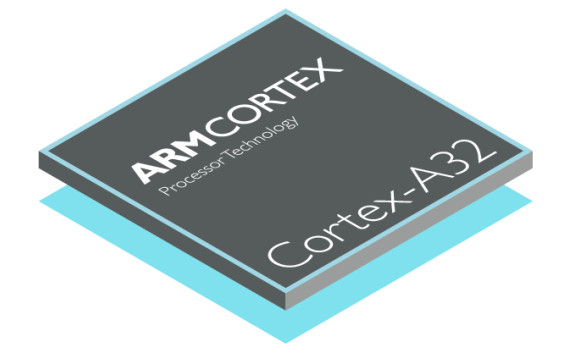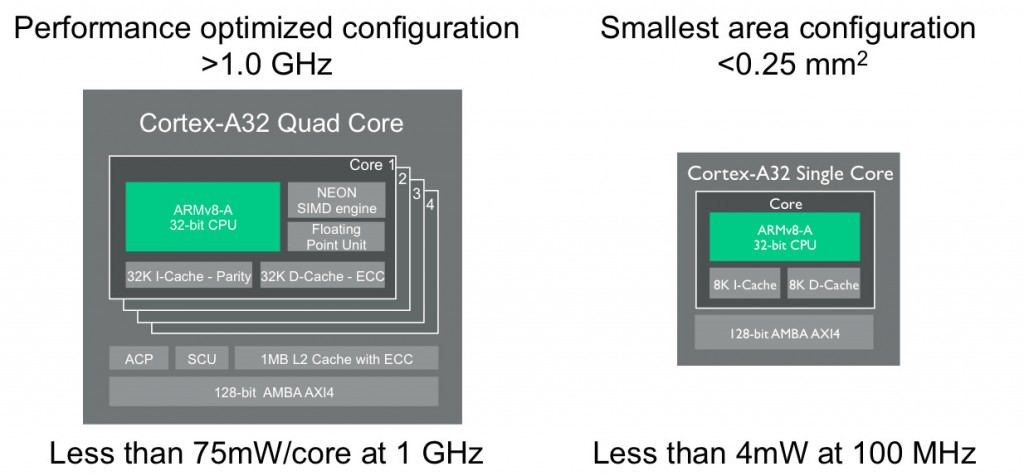
ARM has announced Cortex-A32 processor, it’s latest ultra-efficient application processor for next-generation embedded products. “It is built on the ARMv8-A architecture and is 25% more efficient than the Cortex-A7, delivers higher performance and occupies less than 0.25 mm2 of silicon area, while consuming less than 4mW of total power at 100 MHz in a 28nm process node,” said ARM.

It can be configured in multiple ways from single- to quad-core, making it scalable enough to serve the smallest and most efficient compute devices through to Internet of Things (IoT) gateways and industrial compute applications. It also includes ARM TrustZone technology to provide a secure foundation in the SoC hardware.
Highlights of Cortex-A32 Processor
- ARMv8 architectural enhancements: Cortex-A32 is the only ARMv8-A processor optimised for 32-bit compute. Supports both 32-bit and 64-bit compute capabilities in the AArch32 and AArch64 execution states. Optimized to support the A32/T32 instruction set in the AArch32 execution state, which is ideal for 32-bit rich embedded applications that need the lowest cost and power. Even in AArch32, ARMv8-A adds more than 100 new instructions – and the Cortex-A32 benefits from all of these.
- Higher efficiency and performance: 25% more efficient (more performance per mW) than Cortex-A7 in the same process node. Cortex-A32 delivers this efficiency through performance improvements and power reduction, two often conflicting design goals that the Cortex-A32 team managed to deliver in tandem. Performance improvements relative to the Cortex-A5 range from 30% to a massive 1300% across a range of benchmarks relevant to embedded markets.
- Scalability to target diverse embedded markets: Offers a wide range of configuration options. Large combination offers excellent performance for most rich embedded applications and retains ARM’s low power leadership – consuming less than 75mW per processor core, when running at 1.0 GHz on a 28nm process node. Smallest configuration occupies less than quarter of mm2 and consumes less than 4mW at 100 MHz in the same 28nm process node.
